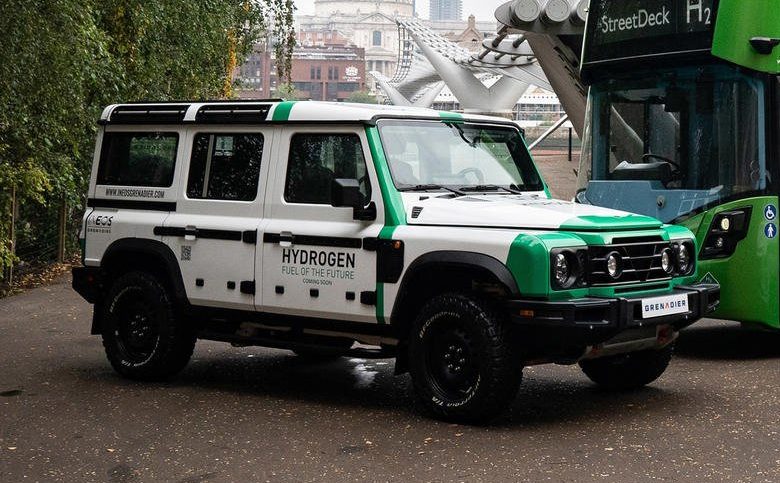Ineos CEO Lynn Calder says the British 4×4 maker is preparing to run a hydrogen-powered prototype of its Grenadier.
Ineos Automotive CEO Lynn Calder has confirmed that the firm will show a hydrogen fuel cell-powered Grenadier 4×4 at this year’s Goodwood Festival of Speed.
At the Financial Times Future of the Car Conference in London, Calder said: “To prove that the technology is capable, we’ve built a hydrogen fuel cell demonstrator that we will launch at [the Goodwood] Festival of Speed in the summer.
“[Ineos is] a producer of 400,000 tonnes of hydrogen per annum, making big investments across Europe in green hydrogen development. We absolutely think that’s a part of the [future powertrain] mix as well.
“And I think that the combustion engine will continue, whether it be in Europe with low-carbon fuels, alternative fuels, or whether it be in corners of the world that don’t have the option or the infrastructure [to go battery-electric].”
Ineos confirmed the development of the Grenadier FCEV with British engineering firm AVL in late 2021, with on- and off-road testing having taken place last year.
It uses powertrain technology from Hyundai, with which Ineos inked a memorandum of understanding in 2020.
The Korean manufacturer has been prolific with FCEVs, selling the Nexo SUV in select markets and last year showing the N Vision 74 concept, which uses a 62.4kWh battery, a 95kW fuel cell and two motors making a combined 500kW.
Calder added that “the broader the technology options, the better the outcome will be” for reducing the transport sector’s carbon output.
She also called on policy-makers to invest in the hydrogen fuelling network, as well as other new technologies, instead of phasing out existing powertrains.
She said: “What I see is big decisions being made, big proclamations, bans, that push the industry into a certain direction, rather than incentivising.
“Incentivising would be a much better way to do it. If governments said that they wanted to incentivise electric vehicles, then they would spend money on the distribution network.
“If we wanted to incentivise fuel cells, they would spend money on or incentivise green hydrogen production and the distribution network.
“Just saying they want something to happen isn’t going to make it happen. And I think in the meantime, what you want is producers of clean energy, whether that’s green hydrogen or lower-carbon fuels; a distribution network; and people who understand the technology to bring that technology to market.
“I think we’ve got two of those three. We’ve got the production and we’ve got the technology knowhow. You know we’ve recently built a hydrogen fuel-cell demonstrator of the Grenadier. But we don’t have distribution networks, and that’s where the incentive needs to come.




